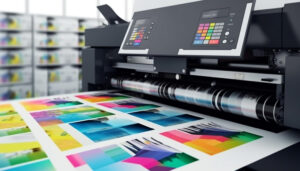11 Places to Sell Print On Demand Products with Printify
Did you know there are 11 different places where you can sell print on demand products online with Printify? I had no idea about some of these platforms until I did a bit of research. While I was already familiar with a few, others were new discoveries for me. In this blog post, I’ll walk you through each of these platforms, discussing the pros and cons of each one. I won’t delve into the setup process for each platform; that will be covered in another post since it could take too long. Instead, I’ll focus on what I’ve learned about the pricing and features available on Printify, as well as my thoughts on each platform.
We strongly recommend that you check out our guide on how to take advantage of AI in today’s passive income economy.
Table of Contents
What is Printify?
Let’s start with a quick overview of Printify. For those unfamiliar, Printify is a print-on-demand platform that allows you to create and sell custom products without holding any inventory. It’s free to use, which is a huge advantage for anyone starting out. Printify doesn’t charge a monthly fee, but they do take a cut of the total price when you make a sale. For instance, if you purchase a t-shirt from Printify for $12 and sell it for $25, you keep the difference. This model makes it easy to set up an online store without upfront costs.
Before diving into where to sell your products, it’s worth mentioning the integrations that Printify offers. You can find a comprehensive list of these on their homepage. I’ll be discussing these platforms in a particular order that makes sense for this blog post, starting with the most popular options.
1. Etsy
The first platform I want to discuss is Etsy. Etsy is probably the most well-known platform among Printify users. I’d estimate that about 80 to 90% of people who sell through Printify are doing so on Etsy. This high percentage is primarily because Etsy has a significant amount of traffic. If you’re selling print-on-demand products, this is a great place to reach potential customers.
One of the advantages of selling on Etsy is the numerous promotional opportunities available. You can leverage tools like Everbee to find out what’s selling well and optimize your listings accordingly. Printify has seamless integration with Etsy, making it simple to sync your products. Plus, there are plenty of online tutorials that guide you through the process of setting up your Etsy store, which is another bonus.
However, it’s important to note the costs involved when selling on Etsy. There’s a one-time listing fee of $15 if you’re new to the platform. Additionally, each listing costs about 20 cents and lasts for a year. While it’s not entirely free like some other platforms, the potential for sales on Etsy makes it worth considering.
2. Amazon
The next platform that gets me excited is Amazon. Recently, Printify announced its integration with Amazon, which opens up a whole new realm of possibilities for sellers. Amazon is unique in that it requires a monthly fee of $40 to sell, but the traffic you can gain from this platform is phenomenal. If you’re willing to invest a bit, you can reap significant rewards from Amazon’s vast audience.
Selling on Amazon with Printify allows you to customize your products in ways that Amazon’s Merch on Demand doesn’t allow. While I won’t get into the details here, you can check out my video collaboration with Stephen Chin for more insights on this. The $40 fee can be viewed as a small price to pay considering the potential for high sales volumes.
Amazon also offers exclusive profit incentives, such as a 10% cash back program, which can further enhance your earnings. They have a robust support system and cater to sellers in over 100 countries, making it a global opportunity. Given the massive traffic that Amazon receives, I think this platform should be a top contender for anyone looking to sell print-on-demand products.
3. eBay
I was surprised to learn that Printify also integrates with eBay. Many people don’t realize that you can sell print-on-demand products on eBay. eBay attracts a different demographic compared to Etsy, often appealing to a broader audience. This platform also has significant traffic, making it an excellent option for sellers.
Selling on eBay allows you to reach various customers, and you can sell locally, which is another unique feature. Like Etsy, eBay offers its own set of promotional resources to help you drive traffic to your listings. I found the information on eBay’s selling fees quite interesting. Initially, you get the first 250 listings free per month, which is a great way to start without incurring costs.
Beyond that, you’ll pay a listing fee for additional products, along with a value fee based on the sale price. Although it might take a little more effort to stand out on eBay, I believe it’s a valuable platform to explore for selling print-on-demand products. The flexibility it offers makes it worth considering.
4. Shopify
Now, let’s talk about Shopify. Shopify is arguably the most popular standalone e-commerce platform for print-on-demand sellers. Unlike marketplaces like Etsy or Amazon, Shopify allows you to create your own online store, giving you complete control over your branding. This is a significant advantage if you have a clear vision of what you want to sell and how you want to market your products.
Setting up a Shopify store involves purchasing your domain name and website, but Printify integrates seamlessly with it, which makes the process easier. One of the biggest advantages of Shopify is the unlimited growth potential it offers. You can design your store exactly how you want it, ensuring that your products are presented in the best light possible.
Shopify does come with a monthly fee; the basic plan starts at $29. While this is a cost, it also means you’re investing in your own brand. Since you’re driving your own traffic, you won’t have to compete with other sellers on a marketplace. This exclusivity can lead to higher sales as you attract a loyal customer base to your store.
5. BigCommerce
Another platform similar to Shopify is BigCommerce. I have to admit I haven’t heard as much about BigCommerce compared to Shopify, but it offers many similar features. BigCommerce is particularly popular in the UK, making it a great option if you’re looking to sell internationally. Like Shopify, it allows you to create a standalone e-commerce site where you have full control.
BigCommerce also starts at $29.99 for its basic plan, so it’s in line with Shopify in terms of pricing. Although I haven’t used it extensively, I believe it has great potential for those looking to create their own online store. If you’re open to trying something new and want to explore different e-commerce platforms, BigCommerce could be worth checking out.
6. Wix
Wix is another platform that has gained popularity, especially for individuals who want to create their own websites. If you’ve built a website on Wix, you can integrate Printify easily and sell your products directly through your site. This integration allows you to maintain the aesthetics and branding of your existing website while adding the functionality to sell print-on-demand products.
I’ve seen numerous Wix commercials online, which indicates that they are investing heavily in marketing. This could be a sign that the platform is growing and becoming more user-friendly for e-commerce. If you’re already using Wix to create your website, the addition of Printify could enhance your online presence.
Wix also provides various e-commerce features that allow you to manage your store efficiently. While I haven’t personally used Wix for selling print-on-demand products, I think it’s a viable option for those who prefer a more visual website-building experience.
7. Squarespace
Next up is Squarespace, another excellent website-building platform that caters to creatives. Squarespace is known for its beautiful templates and user-friendly interface. If you’re looking to create a visually appealing online store, Squarespace is definitely worth considering.
Printify integrates well with Squarespace, allowing you to sell your products seamlessly. The pricing for Squarespace starts at around $12 per month for basic features, which is relatively affordable for those just starting. One of the best features of Squarespace is its ease of use; even beginners can set up an attractive online store without any coding knowledge.
The main drawback I see is that Squarespace isn’t as feature-rich as some of the other platforms when it comes to e-commerce. However, if your focus is on aesthetics and brand presentation, it can be a fantastic option. Plus, if you’re already using Squarespace for your portfolio or blog, adding an online store could be a natural next step.
8. Facebook and Instagram Shops
Social media has become a powerhouse for e-commerce, and setting up a Facebook or Instagram shop is a smart move for any seller. Both platforms allow you to showcase your print-on-demand products directly to your audience. With millions of users, social media is an incredible avenue for reaching potential customers.
Printify integrates smoothly with Facebook and Instagram, allowing you to sync your products easily. The best part is that you can tap into your existing follower base, which can be invaluable for driving sales. Plus, both platforms offer advertising options that allow you to reach an even broader audience.
Setting up a shop on these platforms is generally free, but you may need to invest in advertising to maximize your reach. Social media also allows for easy customer interaction, making it easier to build a community around your brand. If you’re comfortable with social media marketing, this can be a game-changer for your print-on-demand business.
9. Redbubble
Redbubble is a popular print-on-demand marketplace that allows artists and designers to sell their work on various products. If you’re an artist looking for an audience, Redbubble can be a fantastic option. The platform takes care of the production and shipping, so you can focus on creating.
One of the best features of Redbubble is its established community. Artists can gain visibility by simply joining the platform, as it has built-in traffic.
However, this does mean that competition can be stiff, so it’s crucial to optimize your listings effectively.
Redbubble also has specific pricing structures, which can vary based on the product. It’s worth noting that you set your markup, which allows you to control your profits. If you’re an artist or designer wanting to showcase your work, Redbubble could be a great fit.
10. Teespring (now Spring)
Teespring, which is now rebranded as Spring, is another print-on-demand platform that allows creators to sell custom products. Like Redbubble, Spring focuses on creators and offers various promotional tools to help you reach your audience. You can create unique products and sell them directly to your followers.
One of the benefits of using Spring is its built-in social sharing features, making it easier to promote your products. You can launch campaigns and set goals to engage your audience. However, like other marketplaces, competition can be intense, so finding your niche is essential.
Spring also has no upfront costs, so you can start selling your designs without financial risk. This makes it accessible for beginners. If you’re passionate about creating and want to reach a dedicated audience, Spring can be a solid choice.
11. Zazzle
Last but not least, we have Zazzle, another popular print-on-demand marketplace. Zazzle allows you to create a variety of products, from apparel to home decor. Like Redbubble and Spring, Zazzle offers an established platform where you can gain visibility and reach potential customers.
Zazzle has a unique pricing structure where you set your royalty percentage, allowing for some flexibility in profit margins. The downside is that the platform can be crowded, so standing out requires effective marketing and optimization of your listings.
Zazzle is a good option if you want a wide range of products to choose from. The community on Zazzle is also quite active, which can be beneficial for feedback and support.
Conclusion
In conclusion, there are numerous platforms where you can sell print-on-demand products with Printify. From popular marketplaces like Etsy and Amazon to standalone e-commerce platforms like Shopify and BigCommerce, each offers unique features and advantages. Whether you’re an artist, entrepreneur, or hobbyist, there’s a platform that can suit your needs.
Choosing the right platform depends on your goals, target audience, and preferences. Take your time to explore each option, and don’t hesitate to experiment with multiple platforms to find what works best for you. Happy selling!

We strongly recommend that you check out our guide on how to take advantage of AI in today’s passive income economy.




